Plusweek research material and sketches/process
I decided to do something experimental for the next few weeks; I want to be able to make one (or a series of) paintings. I want to do this by bringing certain things we have learned in this minor into it; for example I want to be able to do research beforehand and use that as a starting point for the series of paintings so that I have a good understanding of the subject and can communicate my artworks more clearly. I stumbled upon this tumblr page https://hoodoogardens.tumblr.com and this gave me the idea to use black spiritualty as the base, my own country Surinam also has their own version of this and I also want to do more research on this. In essence I want to try out a new research-based working method.
Week one: Start my research, decide on the direction and focus points by using https://hoodoogardens.tumblr.com as a starting point and making it more clear as I go along. I will also work on a documentation space, i.e, sketch book, online website etc.
Start making sketches after I have a good idea of the research part and connect these two.
Week two: Finishing the sketches at the end of the week, starting to do colorstudies and researching the colors I want to use and meaning behind certain colors in the context of the subject of my research.
Week three and four: Deciding on the final colors and starting on the final piece(s)
Planning:
African traditional religions that found new ways to survive as as a form of resistance, resilience, and ingenuity during the Atlantic slave trade within the African diaspora in South America, the Caribbean and North America.
Hoodoo is an amalgamation of spiritual practices, traditions, and beliefs created by African slaves in North and South America that were held in secret from slaveholders. Hoodoo is a mixture of African, European and indigenous folk practices. Also known as "Lowcountry Voodoo" in the Gullah South Carolina Lowcountry, Following the Great Migration, Hoodoo spread throughout the USA.
Regional synonyms for hoodoo include conjuration, witchcraft, or rootwork.
The traditional African religions or traditional beliefs and practices of African people are a set of highly diverse beliefs that includes various ethnic religions. Generally, these traditions are oral rather than scriptural and passed down from one generation to another through folk tales, songs and festivals, include belief in an amount of higher and lower gods, sometimes including a supreme creator or force, belief in spirits, veneration of the dead, use of magic and traditional African medicine. Most religions can be described as animistic with various polytheistic and pantheistic aspects. The role of humanity is generally seen as one of harmonising nature with the supernatural.
Approximately 388,000 African people from various ethnic groups were shipped to British North America (present day Canada and The United States of America) between the seventeenth and nineteenth centuries as a result of the transatlantic slave trade.[5] They were Kongo, Igbo, Akan, Mandé, Yoruba, Fon, Ewe, and Fulbe, among many others. Hoodoo began not long after Indigenous Americans, enslaved Africans, and Europeans came into daily contact with one another during the colonial era. The most widely accepted narrative categorizes Hoodoo as a primarily African retention with Native American and European influences. The extent to which Hoodoo could be practiced varied by region and the temperament of the slave owners. Enslaved Africans of the Southeast, known as the Gullah, experienced an isolation and relative freedom that allowed for retention of the practices of their West African ancestors. Root work or Hoodoo, in the Mississippi Delta where the concentration of enslaved African-Americans was dense, was practiced under a large cover of secrecy. Hoodoo was first documented in American English in 1875 and was used as a noun (the practice of hoodoo) or as a transitive verb, as in "I hoodoo you," an action carried out by varying means. The hoodoo could be manifest in a healing potion, or in the exercise of a parapsychological power, or as the cause of harm which befalls the targeted victim. In African-American Vernacular English (AAVE), Hoodoo is often used to refer to a paranormal consciousness or spiritual hypnosis, a spell, but Hoodoo may also be used as an adjective for a practitioner, such as in "Hoodoo man". Known hoodoo spells date back to the 1800s. Spells are dependent on the intention of the practitioner and "reading" of the client.
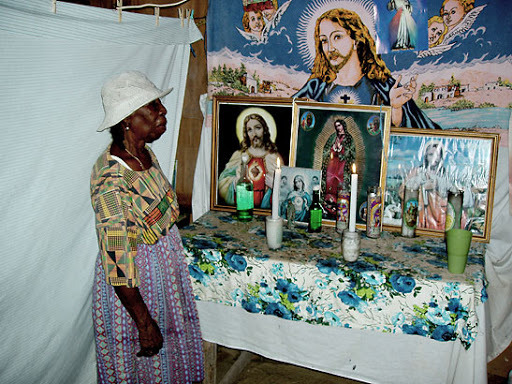
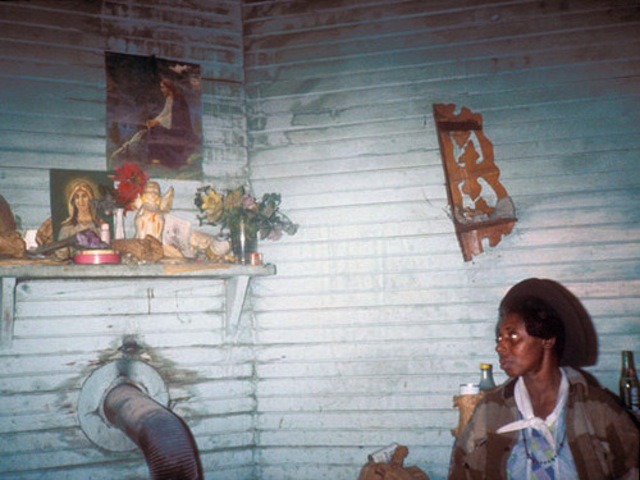
Origins of African spirituality
Voodoo - also known as West-African Vodun, Vodou in Haïti, Santeria in Cuba and Puerto Rico, Candomblé in Brazil, Obeah in Jamaica, and Winti in Suriname.
The difference between hoodoo and voodoo
Pop culture continually intermixes many African Diasporic traditions and portrays them exclusively as Voodoo. However, most of what is portrayed in books, movies, and television is actually hoodoo. Voodoo is a religion that has two markedly different branches: Haitian Vodou and Louisiana Vodoun. Hoodoo is neither a religion, nor a denomination of a religion—it is a form of folk magic that originated in West Africa and is mainly practiced today in the Southern United States.
Hoodoo, known as “Ggbo” in West Africa, is African-American folk magic. It consists mainly of African folkloric practices and beliefs with a significant blend of American Indian botanical knowledge and European folklore. It is in no way linked to any particular form of theology, and it can be adapted into numerous forms of outward religious worship. Although it is not a religion, there are elements of African and European religions at the core of hoodoo beliefs. Teachings and rituals are passed down from one practitioner to another—there are no designated priests or priestesses and there are no divisions between initiates and laity. Rituals vary depending on the individual performing them; there is no strict approach that one must adhere to. Today, hoodoo is mainly practiced in the Southern United States, and most people who practice hoodoo are Protestant Christians.
Hoodoo tradition emphasizes personal magical power invoked by the use of certain tools, spells, formulas, methods, and techniques. It ascribes magical properties to herbs, roots, minerals, animal parts, and personal possessions. Some spells even make use of bodily effluvia and detritus (menstrual blood, semen, urine, spit, tears, nail clippings, hair…you get the picture). Hoodoo spells are typically carried out with accompanying Biblical text, usually from The Book of Psalms, but they are generally not performed in Jesus’s name. The intention behind hoodoo practice is to allow people to harness supernatural forces in order to improve their daily lives.
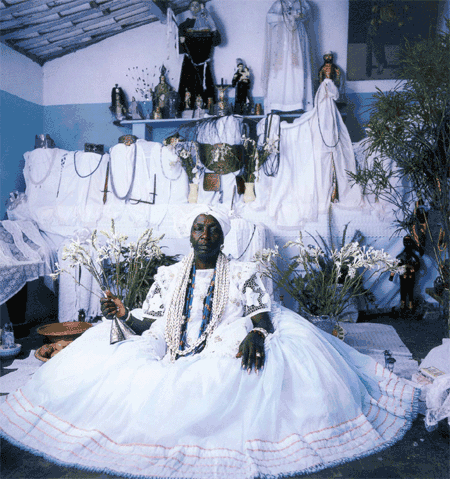
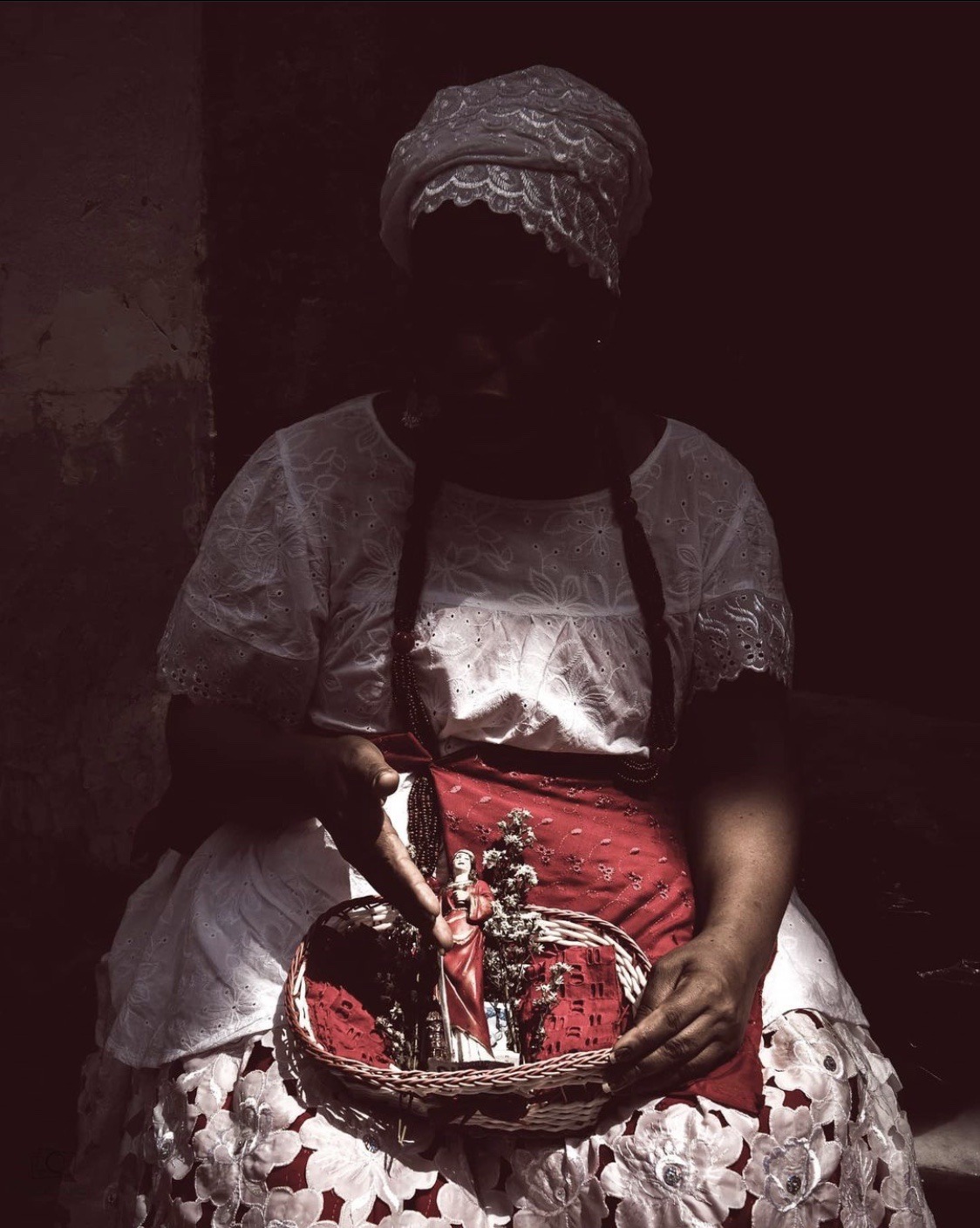
The word “voodoo” comes from an African word meaning “spirit” or “God.” Vodou is an African Diasporic religion that comprises traditional African religious practices of numerous tribes—some of those tribes were rivals forced to unite for survival under the conditions of slavery. The tribes combined practices and thus created regleman (ritual order) to honor each tribe’s spirits. Their practices were also influenced through syncretism with French Catholicism; this is evidenced in the use of Catholic saint images to represent the Lwa (spirits) honored in Vodou.
Vodou is an established and structured Haitian religion that is a significant part of the Haitian culture. Followers of the religion believe in a god called “Bondye.” He is understood to be an omnipotent and distant god who does not directly intercede in the lives of humans. Practitioners worship him indirectly by venerating the spirits that assist him. Vodou has an initiated priesthood, but initiation is not required to join the religion (in fact, most people are not initiated). The main liturgical language of Vodou is Creole, the local dialect of Haitian French.
Vodoun (Louisiana Voodoo) is also distinctly different from Vodou (Haitian Voodoo). Vodoun is a fusion of religious and magical practices found today in the Southern United States. This combination of practices is derived from African traditions, namely West African Dahomeyan Vodun, and was brought over during the African slave trade. Vodoun has a correlation with Spiritualism and shares many magical practices with hoodoo. It encompasses various Lwa (spirits of Vodou), a considerable presence of the Catholic saints, and bits of Southern folk magic (including gris-gris, wanga, and mojo bags). Vodoun lacks the regleman (ritual order) that Vodou has. The primary liturgical language is English mixed with some French Creole.
Ancestor Altars
At its core, hoodoo is a practice of ancestral veneration. The honoring and even worshipping of ancestors is practiced around the world. Many African religions have a foundation in the belief that one's ancestors play an active role in the life of the living even after death. The spirits of the dead are invited in the household so that they may influence the family and provide blessings and protection. The intimate relationship between the living and dead is a complex and multifaceted exercise of remembrance, respect and reconciliation.
Maintaining a connection with our dead ancestors is a foreign concept to the majority of Americans because Christianity permeates our culture. Christianity teaches that death is a concrete ending and many approach the subject of death and dying with morbid fear and confusion. For those who are seeking to practice hoodoo, it can be difficult to address these ingrained fears and establish a new understanding of the cycles of life and death. Hoodoo like many African traditions, sees life and death as being an interconnected journey of the soul. When the sun sets on our lives in the world of the living world, it rises on the spiritual plane where our souls continue to live.
The power that resides in and through hoodoo practice comes directly from the strength, endurance and wisdom of those who came before us and establishing a relationship with our ancestors is vital to the success of every working, charm, trick and candle burning used in the tradition. Without the assistance of our ancestors, trying to perform workings is like shooting in the dark hoping to hit something resulting in a lot of wasted time and energy. Our ancestors don't just power magical workings, they also guide our steps so that we can avoid negative situations and recover from mistakes quickly. The real strength of a conjure man comes from the foresight provided by their ancestors through their ancestor altar.


Here are 5 elements of an ancestor ritual which can be used at your altar:
1. Open the Space: Before you invite your ancestors, create sacred space by clearing (I prefer the uses of Palo Santo for this.)
2. Invocation: Calling in your ancestors for a specific purpose (even if it is simply gratitude.)
3. Dialog: Speaking aloud your request.
4. Repetition: Creating a regular schedule and process.
5. Closing the space: The ritual space is closed when you send your ancestors away, with gratitude and trust. This helps shift this space from sacred back to mundane.
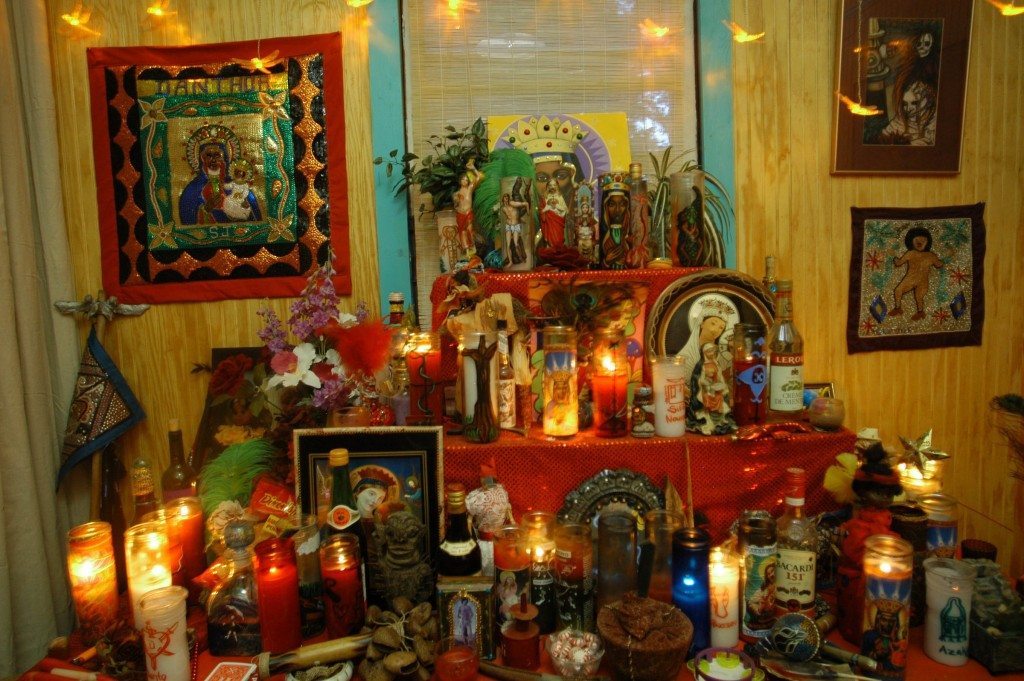
Create space in your home dedicated to your Ancestors. This doesn’t have to be a grand undertaking. It is quite simple. A photograph of a beloved family member, spiritual teacher, or companion animal that has transitioned is a great focal point. They may already be displayed in some fashion—framed on the wall, bookshelf, or mantelpiece. All that is needed to create an Ancestor altar is a focused intention. Add a tea light candle, a small bud vase to hold seasonal blooms from your yard (spring violets are coming), or an item that once belonged to, or reminds you of your loved one. When you see this everyday altar, you call your beloved dead to mind. You may ask them for guidance or blessings in the day ahead.
Add another level: You may also consider adding a representation of your cultural heritage—an image or object representing far-distant Ancestors. A photograph of a beautiful landscape from your Ancestral homeland, a rustic village or farmstead, a Neolithic burial mound. Anything that recalls those long-dead.
Another place to create an Ancestor altar is in nature. This outdoor space can honor all Ancestors. I notice whenever I am walking in the woods, I keep an eye out for natural altars. These places look or feel sacred in some way. Here, the goal is not to create as much as it may be to mindfully enhance and bear witness. A tree stump grown over with bright green moss, or a flat or indented stone covered in lichens or that holds a natural pool of rainwater are a few examples. These places resonate with the energies of Those Who Go Before. You may find a lovely stone, or stunning dogwood blossom or autumn leaf as you walk. These can be the offerings you use to focus your intention, to honor the Ancestors or genus loci.
Winti
Winti is an Afro-Surinamese traditional religion that originated in South America and developed in the Dutch Empire. It is a syncretization of the religious beliefs and practices of Akan and Fon slaves (with the gods such as Leba or Legba, Loko and Aisa or Ayizan) with Christianity.
The foundation of Winti based on three principles: the belief in the supreme creator called Anana Kedyaman Kedyanpon; the belief in a pantheon of spirits called Winti; and the veneration of the ancestors. There is also a belief in Ampuku (also known as Apuku) which are anthropomorphic forest spirits. An Ampuku can possess people (both men and women) and can also pass itself off as another spirit. Ampuku can also be water spirits, and are known in such cases as Watra Ampuku.
Anana Keduaman Keduampon meaning: God, The creator of heaven and earth.
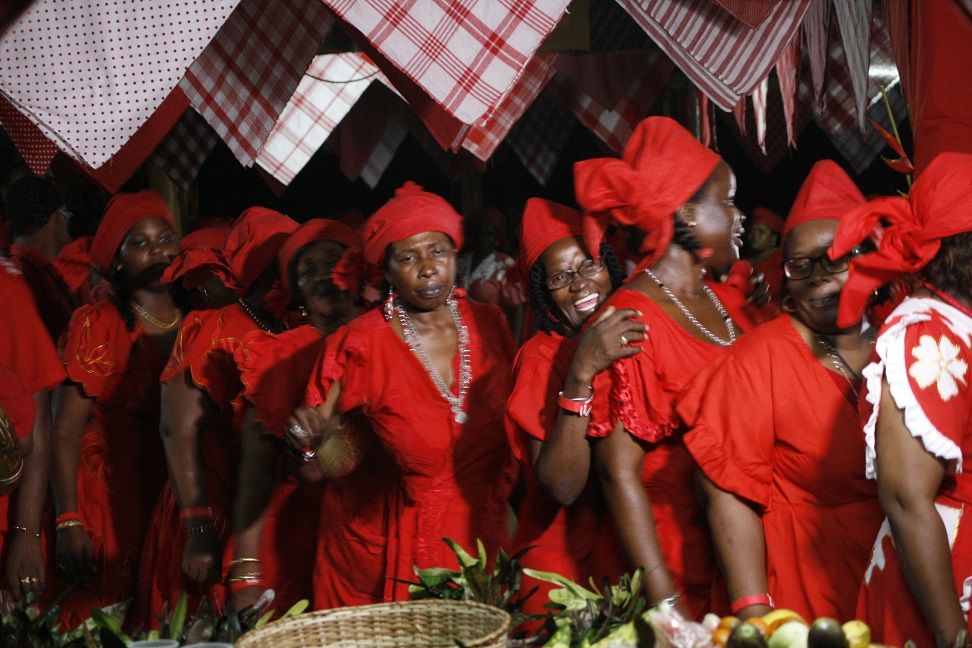

During slavery, members of various West African tribes were brought to Suriname. They came from kingdoms that had certain religious aspects in common, like the belief in a supreme creator God, who lives far away from the people, leaving the world to less-powerful gods or spirits, and the belief in an immortal human soul and the related ancestor worship.
After the abolition of slavery in 1863, a ten-year period of economic slavery followed known as "De Periode van Staatstoezicht" (The Period of State Supervision). It ended in 1873 and was followed by a very long period of mental and cultural slavery. The former slaves and their descendants were forced to convert to Christianity, and for nearly 100 years (1874–1971), practicing Winti was forbidden by law. They were also forced to speak Dutch; education in their own language, Sranan Tongo, was forbidden; and children were not allowed to speak Sranan Tongo in schools.
After the turn of the millennium, Winti gained momentum. In 2006, the Surinamese government incorporated the Winti interest foundation Tata Kwasi ku Tata Tinsensi into the database of religious organisations. In 2011 the first two Winti marriage officials were appointed. Winti priests were appointed informally already, but still without legal status. In 2014 Dorenia Babel became the first person officially recognized as Winti priest, appointed by the government in order to develop winti in the public realm. In 2019 psychiatrist Glenn Helberg made a public call to the Suriname-based Christian denominations to consider Winti as an equal religion.
The Soul
It is believed that a human being has three spiritual aspects, the Dyodyo, Kra, and Yorka. Through these aspects human beings are integrated into the supernatural world. The Dyodyo are the supernatural parents who protect their children and may be higher or lower spirits. They received the pure soul, the Kra, from Anana and give that to a child. The Kra and Dyodyo determine your reason and mentality, while the biological parents provide blood and the physical body. Yorka, the other spiritual part, absorbs the life experiences. After the death of the physical body, the Kra goes back to the Dyodyo and the Yorka goes to the realm of the dead.
Nature
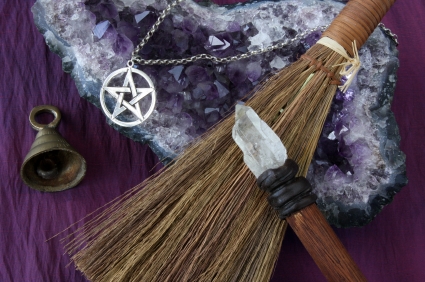
Sticks: Sticks are important to Hoodoo in both a practical and a metaphoric sense. Trees are tremendously important to Africans, thus they play an important role in Hoodoo. An effective Hoodoo spends ample time alone amidst trees, in order to learn the secrets they share. Trees represent the relationship between the living and the dead, and thus they are linked with cleansing, healing, burial, ancestors, and spirits.
Sticking is an adaptation of piercing and scarification rituals. Sticking is the activating motion performed on poppets, stuffed fabric, vegetables, or fruits that represent humans. Sticking and knotting in prescribed amounts on certain days charges magical bundles and mojo bags. Hoodoo involves sticking an object ritualistically—a certain amount of touches by a needle (usually an odd number 3, 7, 9, or 11).
Stones: Minerals and stones are also essential to African magical systems. Carrying a "beauty pebble" (quartz crystal) is indicated by an informant as the primary way of identifying a Hoodoo. Stones seem to be inert, yet Hoodoos realize they are reservoirs of history and energy. Each type of stone discussed in this book has the ability to facilitate magic and conjuration.
Roots: Roots are a vital tool of Hoodoos; "rootwork" is another name for Hoodoo. Roots contain potent juju (good medicine), everything a conjurer desires. Rootwork consists of understanding magical herbalism and then incorporating indigenous wisdom regarding nature and the spirit realm. In my book, I examine the various ways societies in Africa embody and inspire Hoodoo and rootwork.
Another important aspect of the word "roots" is that it indicates the orientation of Sticks, Stones, Roots & Bones. Some books present Eurocentric approaches, especially in relation to magical paths; those approaches are not as inclusive of people of color as we would like. I have even noticed a tendency within some Hoodoo books to refer to Europe when there isn't an easy answer for the root of a Hoodoo tradition or practice. My book helps readers trace the roots of Hoodoo back to Egypt and other countries in the Motherland. There are historical connections between Hoodoo and Egyptian beliefs, traceable through both the names of Hoodoo recipes and the gods and goddesses to which we refer. My book demonstrates the relationship between Hoodoo as a spiritual practice and the traditions of ancient Egypt and sub-Saharan Africa.
The cultural exchanges between Native Americans and African Americans are also significant. Native Americans taught African freedmen and escaped slaves to use indigenous herbs. Enslaved Africans also escaped into Native American communities. Today, many African Americans have Native American ancestry and our magical traditions reflect our heritage. The unique ways Native Americans honor nature are also explored. African and Native Americans share a belief in animism, the belief that nature is imbued with spirits. Hoodoo is one of few practices that has something to offer to everyone; many cultural traditions are embraced in Sticks, Stones, Roots & Bones.
Bones: In the olden days, bones and animal parts were widely used in Hoodoo. They were plentiful, and we were basically a rural, agrarian people. Today, many animals and plants face extinction, their habitats threatened by our continuous growth and expansion. It would be irresponsible for me to give out recipes and formulas that inspired hundreds or even thousands of people to seek out various animals parts—tradition or not. There is nothing magical about harming others, humans or animals—this is a value shared with the Wiccan Rede ("and harm none"). What I am seeking to do is to keep our oral and magical traditions alive. Hoodoo needs to evolve just as we have to survive and grow stronger. In Sticks, Stones, Roots & Bones, I share useful tips for harnessing animal energy without causing harm. Another unique aspect of the book is the emphasis on holistic health, sustainability, and environmental awareness—topics seldom considered, but nevertheless important to Hoodoo and other magical paths.
Process